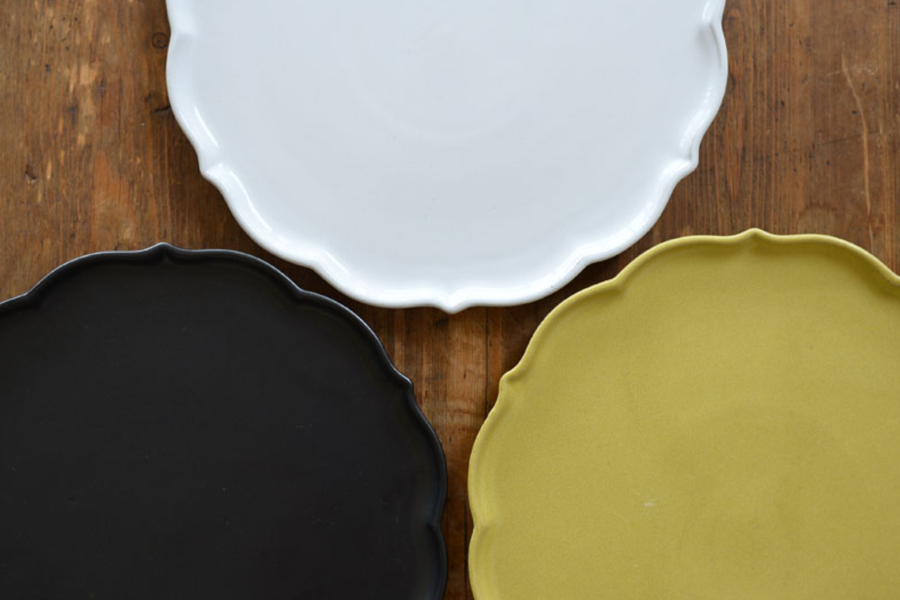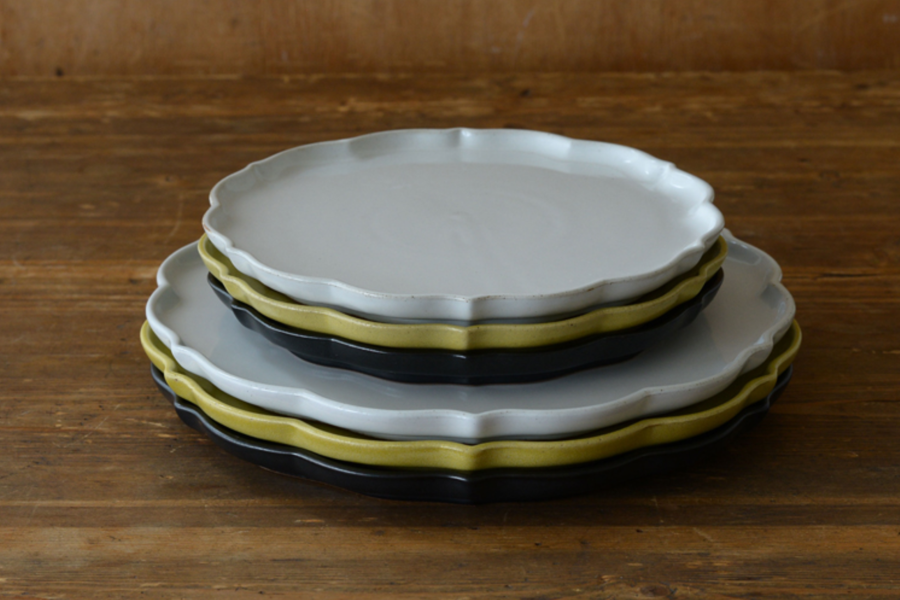当日発送について
以下の条件に該当するご注文を当日配送いたします。
・平日(営業日)の12時までにご注文が完了。
・ご注文いただいた商品の在庫がすべてある場合。
・お支払方法がクレジットカード決済か代引きの場合。
※受注状況や確認事項の有無などにより、お時間をいただく場合がございます。
※12時以降のご注文は最短で発送いたします。
定休日のご案内
土日祝日、お盆、年末年始などは出荷業務をお休みいたします。
Now Loading...
以下の条件に該当するご注文を当日配送いたします。
・平日(営業日)の12時までにご注文が完了。
・ご注文いただいた商品の在庫がすべてある場合。
・お支払方法がクレジットカード決済か代引きの場合。
※受注状況や確認事項の有無などにより、お時間をいただく場合がございます。
※12時以降のご注文は最短で発送いたします。
土日祝日、お盆、年末年始などは出荷業務をお休みいたします。
料理人は食べる人を楽しませようと料理や器選びを工夫し、
食べる人は華やかなひと皿に季節や物語、想いを感じて気持ちが高まります。
古い時代から馴染みのある稜花型をきらきらと光る雪片にみたて、
冬の季語である「風花」と名付けました。
冬晴れのさっぱりした青空を背景に軽やかに舞う雪、積もった雪を吹き上げる冷たい風など、
厳しい季節の中でこそ出逢える美しい風景に思いを馳せ、
伝統的な形を現代でも取り入れやすい、リズムのある個性的な形です。
額縁効果がある縁は緩急をつけ、
柔らかな曲線ときゅっと引き締める部分で対比を出しています。

色は普段使いしやすい白、黄、黒の3色。
黄色は1枚でも映えますが、料理や小鉢と組み合わせることで全体を包み込むような一体感が生まれ、
黄色の明るさが際立ちます。
250プレートは汎用性があり、メインプレートの他に折敷皿として組み合わせを楽しめます。
おやつの時間に小皿と湯呑みを合わせたり、お正月に豆皿や小鉢を所狭しと並べた様子も可愛らしいです。
200プレートは取り皿や菓子皿にちょうど良いサイズです。
高台が高いのでテーブルにできる影も美しく、品があります。

また、風花はどの向きでもしっかりと重なります。
ハマや立ち上がりのカーブの角度にこだわり、見た目も美しくすっきりと片付けられます。
一人でのんびり過ごす時間も大勢で集まる時も、その時々のシーンに合わせて使い分けができます。